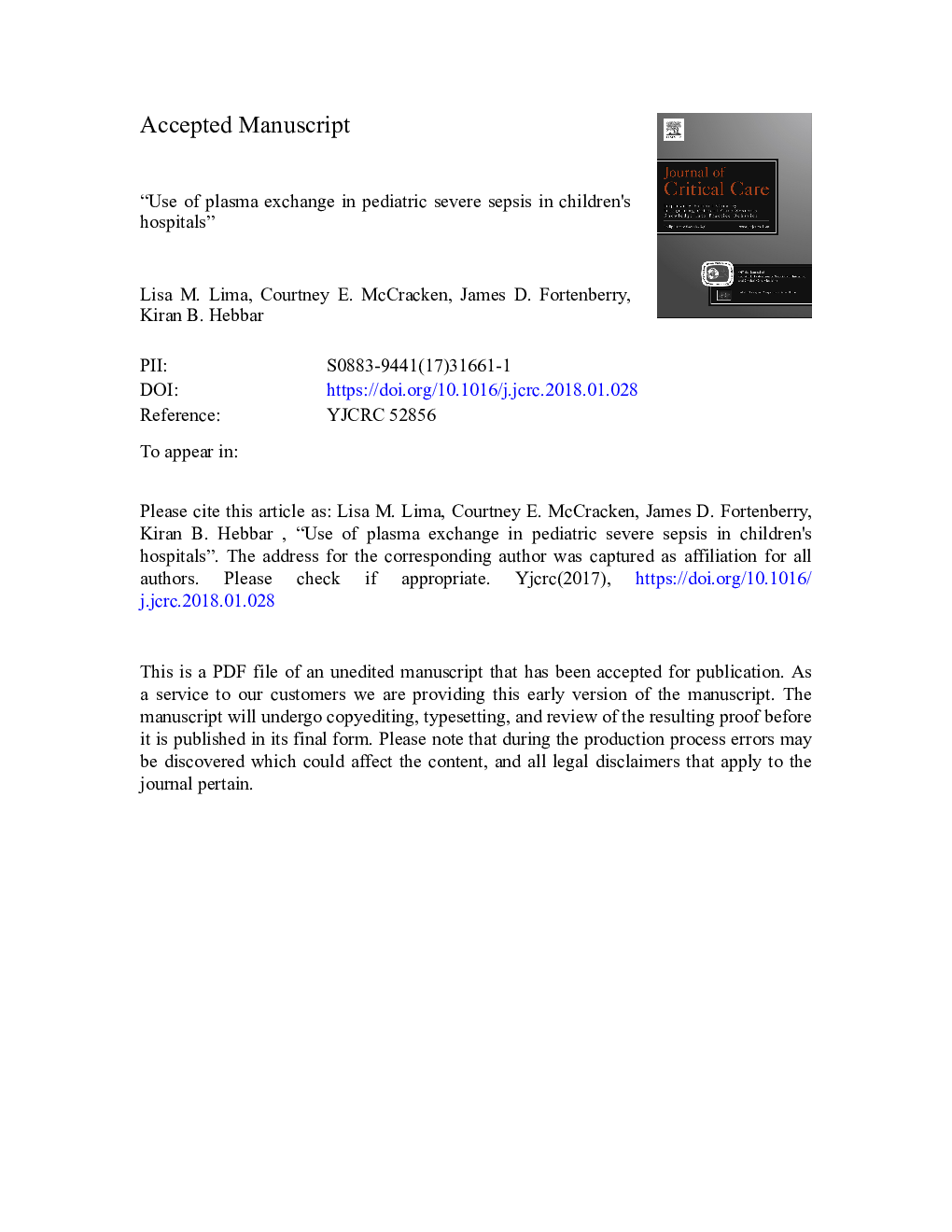| Article ID | Journal | Published Year | Pages | File Type |
|---|---|---|---|---|
| 8620247 | Journal of Critical Care | 2018 | 28 Pages |
Abstract
Pediatric severe sepsis (PSS) is an important cause of death in children. Mortality increases in those with sepsis and multiple organ dysfunction syndrome (MODS). Plasma exchange (PE) has been used as an adjuvant therapy in sepsis, with trials demonstrating variable success. This observational retrospective cohort study aimed to characterize patient demographics, PE use, mortality and resource utilization in septic children from 43 children's hospitals from 2004 to 2012. Of 49,153 PSS cases, 1.8% utilized PE. Utilization increased to 4.8% in those with sepsis and MODS. Comorbidities affected 72-74% of patients. PE patients noted a longer hospitalization than PSS patients (39 vs 17 days). Overall mortality was 14.1% in PSS, increasing to 32.1% in PSS patients receiving PE. Mortality was 22% and 44.4% in PE patients without and with MODS respectively. Mortality decreased over the study period in both PE subgroups. In conclusion, PE utilization in PSS remained stable throughout the study period while PSS mortality decreased over time. Children utilizing PE had a higher associated mortality, but also greater comorbidities and MODS prevalence, likely representing a predilection towards use in more critically ill patients. These data can provide demographic and outcome results to inform future PE trials in sepsis.
Keywords
Related Topics
Health Sciences
Medicine and Dentistry
Anesthesiology and Pain Medicine
Authors
Lisa M. MD, Courtney E. PhD, James D. MD, MCCM, Kiran B. MD, FCCM,
